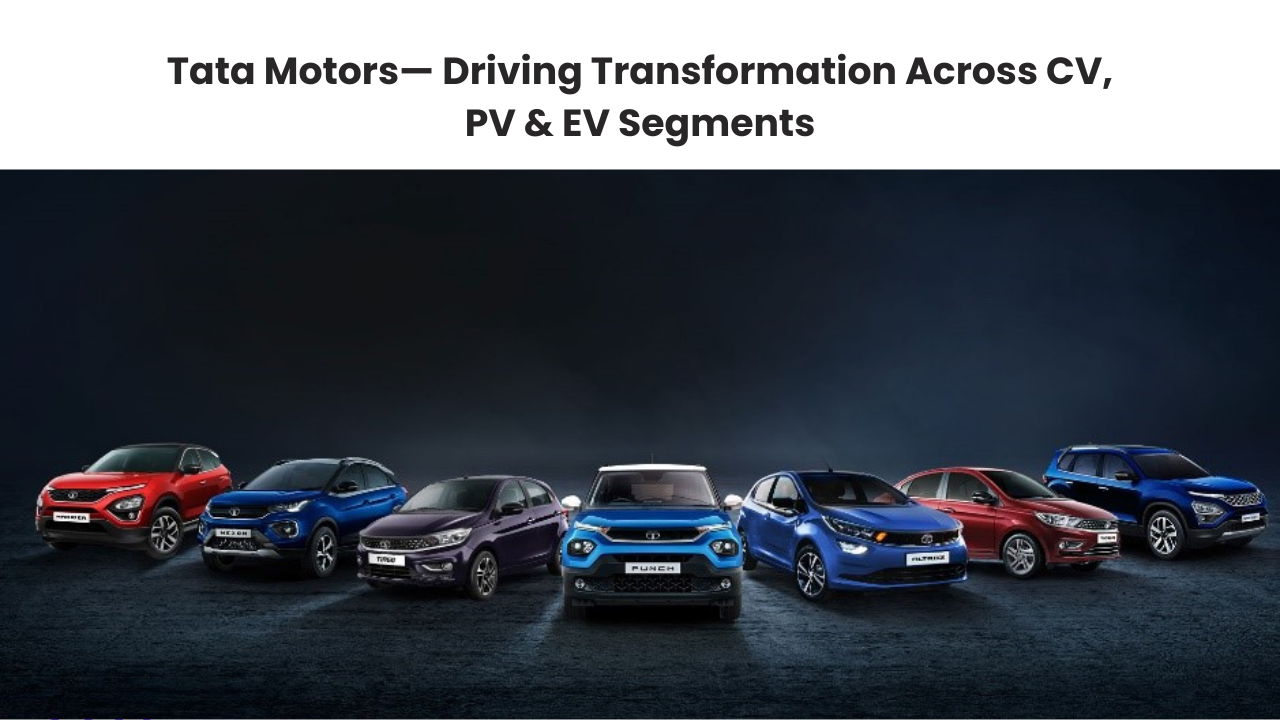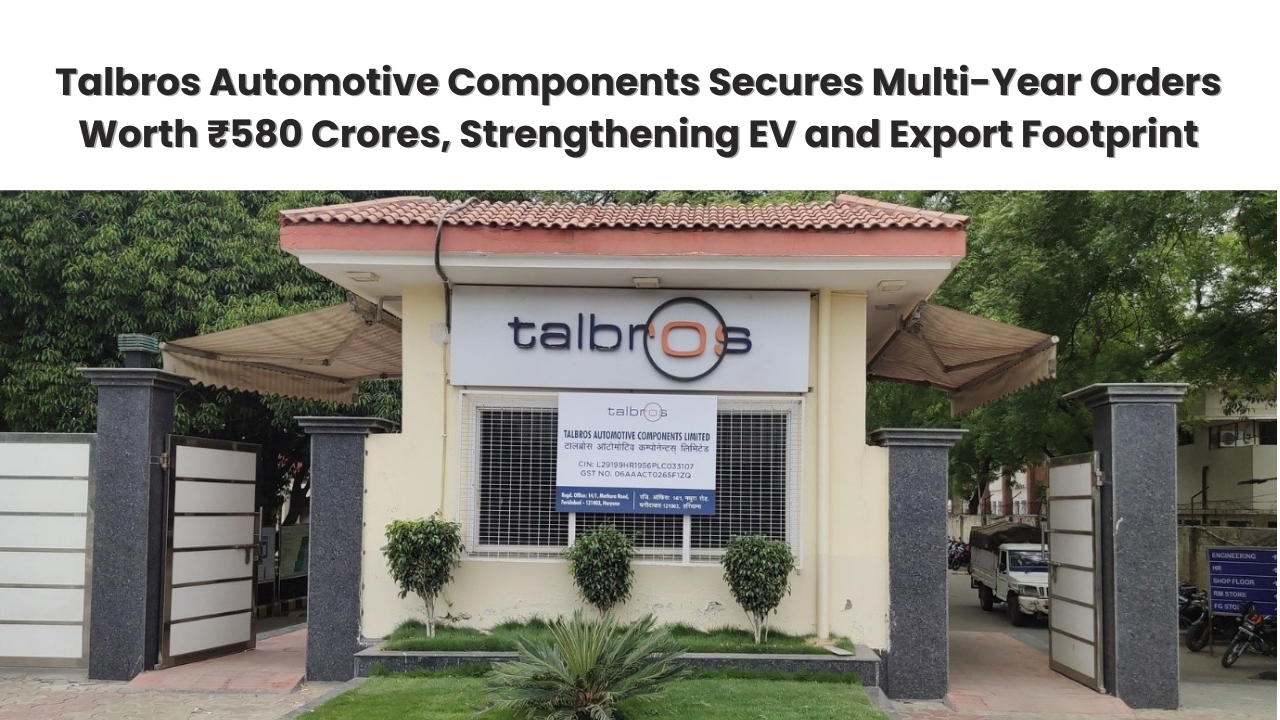Tata Motors’ Investor Day 2025 unveiled a bold vision for the future of mobility in India and beyond. The event showcased the company’s impressive turnaround, robust financials, focused strategies for Commercial Vehicles (CV), Passenger Vehicles (PV), Electric Vehicles (EV), and a strong push toward sustainability and digital transformation.
Strong Financial Turnaround & Corporate Actions
Tata Motors demonstrated a stellar comeback with FY25 revenue reaching ₹440K crore and PBT (before exceptional items) touching ₹34.3K crore. Free cash flow rose to ₹22.4K crore, turning net automotive debt into net cash. ROCE climbed to 17.6%. Key corporate actions included the ADR delisting, DVR cancellation, non-core divestments, and the TML Group becoming net cash positive. The upcoming demerger was also announced to unlock further value.
Commercial Vehicles (CV): Innovation and Global Ambition
The CV segment focused on transitioning to cleaner, connected, and software-led mobility. With an 11.8% EBITDA margin and ₹7.4K crore free cash flow in FY25, Tata Motors leads in market share for trucks and buses. Strategic goals include:
- Digital Business: Expanding services like Fleet Edge, Freight Tiger, and Mileage Sarathi with AI-led fuel efficiency, carrier matching, and predictive maintenance.
- Global Expansion: Targeting ASEAN, Sub-Saharan Africa, and LATAM with localised offerings and partnerships.
- Electrification: Hydrogen, battery, and CNG-fuelled trucks are already operational, including models like Prima H.28 and E.55.
- Sustainability: 11% reduction in Scope 3 emissions since FY22, deployment of circular economy via the TATVA framework, and commitment to net zero by 2045.
Passenger Vehicles (PV): Leadership Through Design and Value
Despite a 2% YoY slowdown in the Indian PV industry, Tata Motors outpaced growth in the SUV segment with 11% volume growth. SUVs now account for 55% of total PV sales, with models like Punch and Nexon leading the charge. Other highlights:
- After-Sales Transformation: Expansion of service bays, digital roadside assistance, and enhanced customer experience with reduced complaints by 18%.
- Product Pipeline: Plans to launch 7 new nameplates and 23 product refreshes by FY30, including segment-specific models across ICE and EV platforms.
- Sustainability Goals: Tata aims to be water neutral and zero-waste-to-landfill by 2030 with over 47% RE already achieved in operations.
EV Business: Leading India’s Electric Mobility Revolution
Tata Passenger Electric Mobility Ltd. (TPEML) has emerged as the clear leader in India’s EV market with a 55% share and over 200K EVs sold. Key initiatives:
- Mainstreaming EVs: Expansion of the EV charging network, dealership infrastructure, and launch of aspirational products like Nexon.ev and Curvv.ev.
- Fleet Electrification: Over 3,600 Tata-branded electric buses deployed across 11 cities, with cumulative mileage exceeding 34 crore km.
- EV Business Models: Operating both Capex and consortium models with asset-light approaches to scale quickly in public transport.
- Cost Leadership: Achieved near price parity between EVs and ICE counterparts due to localisation, battery cost decline, and regulatory pressure on ICE.
Digital Business: Driving Future Growth
Tata Motors’ digital arm is playing a pivotal role in transforming logistics and vehicle operations through:
- Fleet Edge: 10X revenue growth and 15 percentage point renewal improvement.
- Mileage Sarathi: Delivered a 6.1% improvement in fuel efficiency using AI.
- Transport Management System (TMS): Managed 75 billion ton-km of freight with 600+ customers.
These platforms not only improve fleet performance and uptime but also enable mass customisation and better customer engagement across segments.
Outlook: Capital Efficiency and Value Creation
With a clear path to sustainable profitability and growth, Tata Motors has set the following targets for 2027 and beyond:
- CV Segment: Achieve 40% market share, maintain 2–4% capex-to-revenue ratio, and 7–9% FCF post-tax.
- PV + EV Consolidated: Aspire for 10% EBITDA and positive FCF by FY30.
- Sustainability: Reach 100% renewable energy in operations by 2030, and Net Zero by 2040.
Conclusion
Tata Motors’ 2025 Investor Day presentation showcased a robust transformation journey across financials, product innovation, customer experience, and sustainability. With a strong focus on electrification, digitalisation, and global expansion, Tata Motors is poised to remain a dominant force shaping the future of mobility in India and the world.
Did you find this article interesting?
Stay connected with our blog for more insights and updates. We’d love to hear your thoughts, questions, or feedback in the comments below!






